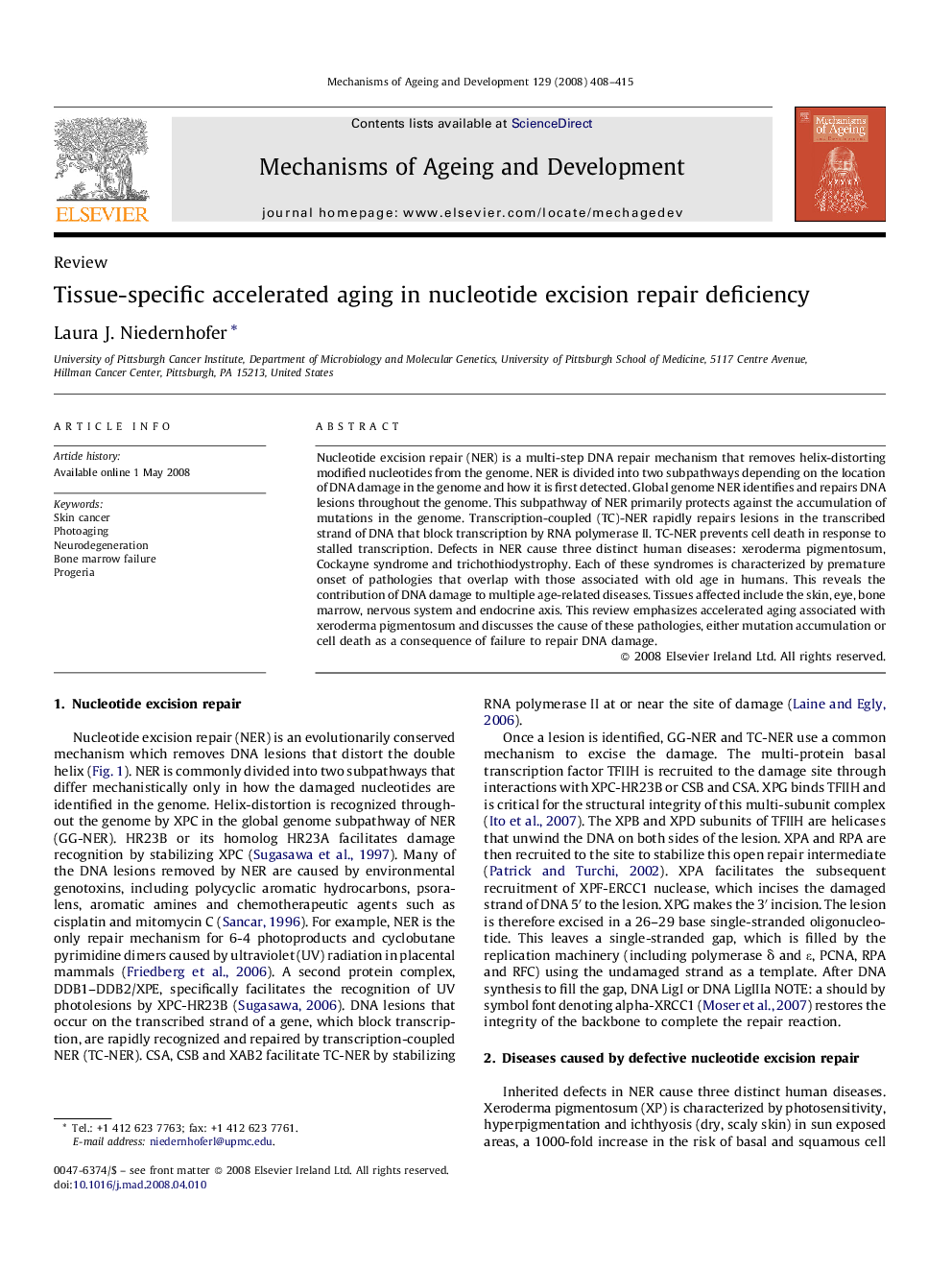| Article ID | Journal | Published Year | Pages | File Type |
|---|---|---|---|---|
| 1919567 | Mechanisms of Ageing and Development | 2008 | 8 Pages |
Nucleotide excision repair (NER) is a multi-step DNA repair mechanism that removes helix-distorting modified nucleotides from the genome. NER is divided into two subpathways depending on the location of DNA damage in the genome and how it is first detected. Global genome NER identifies and repairs DNA lesions throughout the genome. This subpathway of NER primarily protects against the accumulation of mutations in the genome. Transcription-coupled (TC)-NER rapidly repairs lesions in the transcribed strand of DNA that block transcription by RNA polymerase II. TC-NER prevents cell death in response to stalled transcription. Defects in NER cause three distinct human diseases: xeroderma pigmentosum, Cockayne syndrome and trichothiodystrophy. Each of these syndromes is characterized by premature onset of pathologies that overlap with those associated with old age in humans. This reveals the contribution of DNA damage to multiple age-related diseases. Tissues affected include the skin, eye, bone marrow, nervous system and endocrine axis. This review emphasizes accelerated aging associated with xeroderma pigmentosum and discusses the cause of these pathologies, either mutation accumulation or cell death as a consequence of failure to repair DNA damage.
